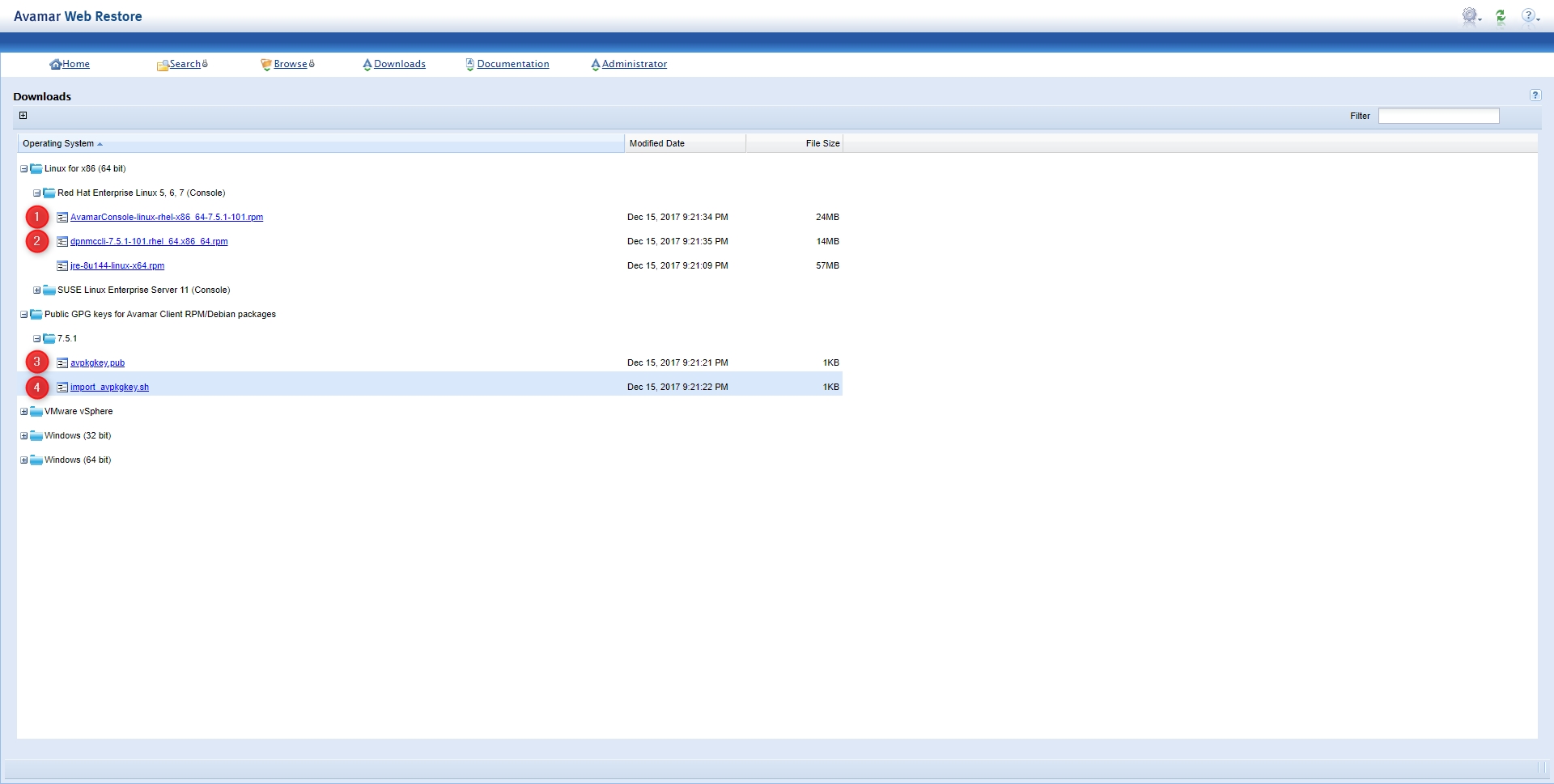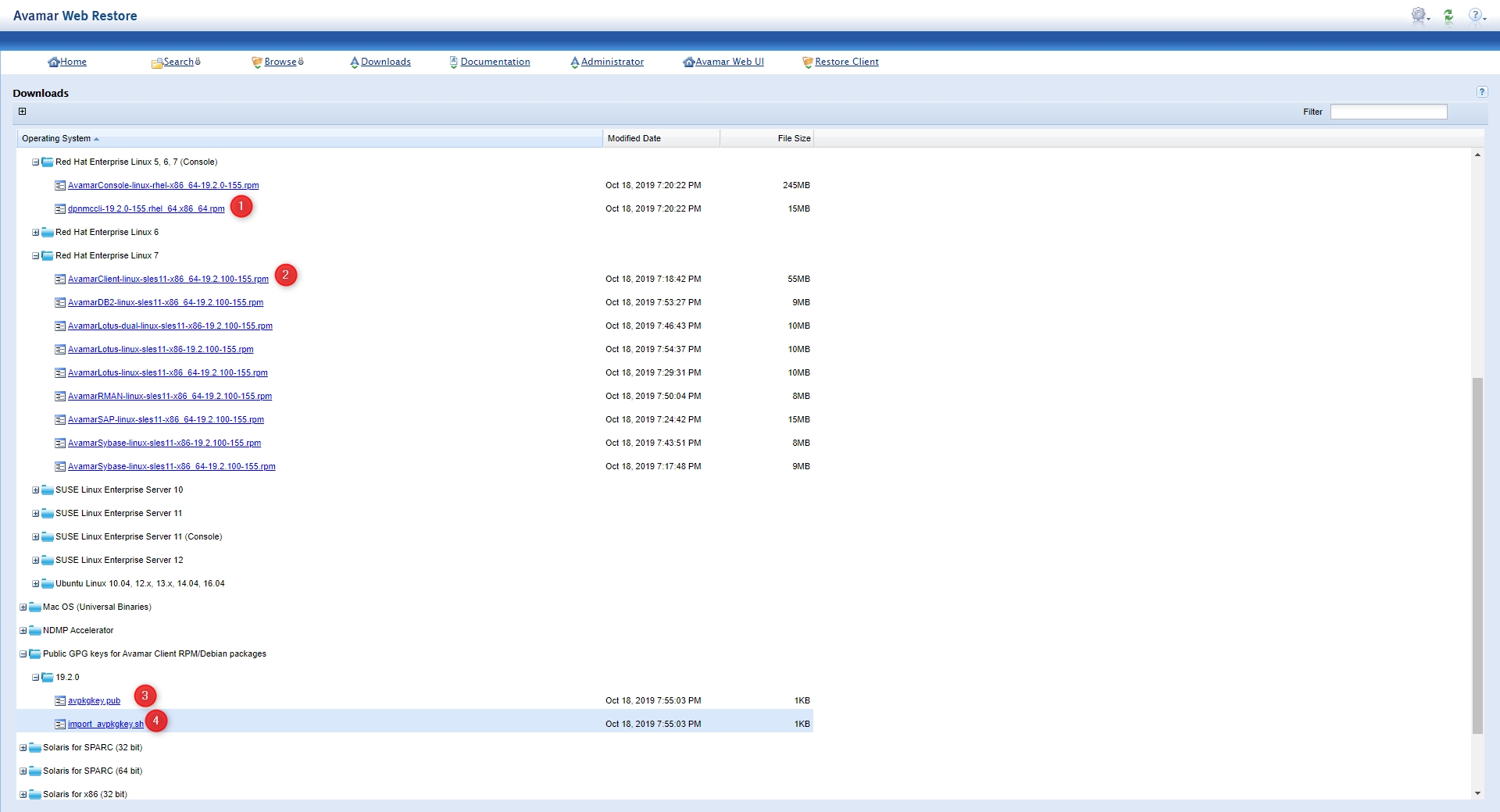Dell EMC Avamar
To integrate Storware Backup & Recovery with Dell EMC Avamar, complete the following on Storware Backup & Recovery Node:
Download the required software:
mccli
Avamar Linux Client
Pubkey (*.pub + sh)
You can obtain the above by browsing the downloads section of your Avamar server installation, provided you have installed 'UpgradeClientDownloads" from the EMC repository to the Avamar server. When in doubt, consult the Avamar documentation.


Import the GPG key by invoking the script:
Run avregister and fill in the required info.
Install the Management Console Command Line Interface (mccli).
Note: please change the RPM name to match the file downloaded from your Avamar installation.
Run avsetup_mccli to configure the management console.
You need to point mccli to your JRE installation, fill in the connection details, and provide the admin username and password.
Quickly test the correctness of this config by typing in:
If the output shows the latest activity on Avamar, everything is OK.
Otherwise, check your config and/or Avamar documentation,
Use the
avregistercommand to register the backup client.Use
avsetup_mcclito set up the client.When choosing JRE - do NOT use
/usr/java/latestbut/usr/java/jre1.8...
Proceed with the configuration and add a backup destination.
On the left side menu, click on Backup Destinations, then change to the enterprise sub-tab, click on the Create Backup Destination button and choose:

Fill in the required info. It may look similar to the example below:
